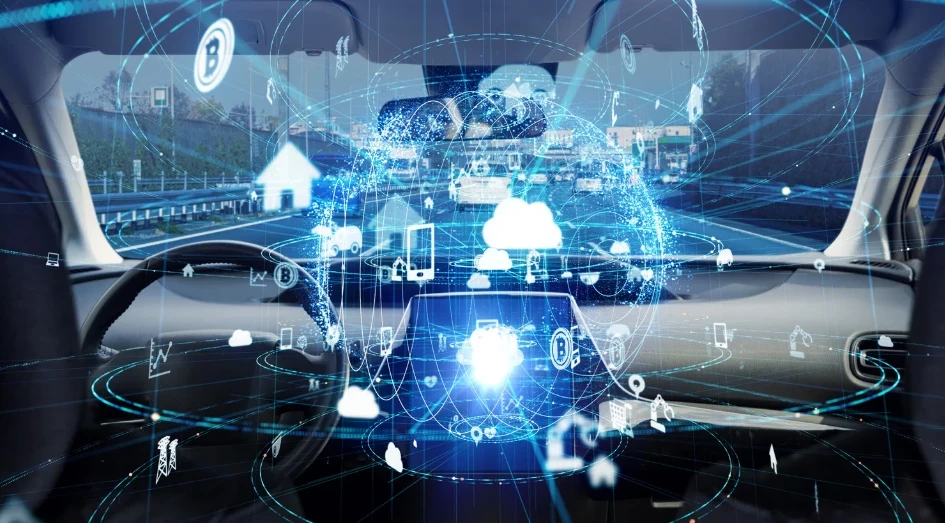Ever since the medium of car advertising was invented, the private automobile has been inexorably linked with the idea – however divorced from reality – of man and machine at one with the open road.
It’s something that pervades to this day. Take Mini’s latest round of ads for the JCW Clubman and Countryman, seemingly created with a mindset that dates from 60 years ago, ironically when the original first hit the road.
Or how about VW’s campaign for its rebooted electric, human-centric future – the people are possibly more representative of urban life in 2019, but the way the cars are portrayed certainly is not. Yes, the cars shown are concepts, so hopefully the representations will be rebooted when the ID3 et al start arriving on real roads… we shall see:
But while the marketing departments of carmakers appear content to perpetuate an alternate reality, because that’s what they’ve always done, things on the road are really quite different.
Times on the road are a changin’
The traffic-clogged reality of today’s roads jars increasingly severely with the advertiser’s fantasy. What’s more, the addition of Uber and Lyft services – those next-generation mobility solutions designed to help make travelling around a city smoother and easier – are actually making congestion worse.
A joint report commissioned by the two firms found that Lyft and Uber’s vehicles contributed to increased congestion in the six cities it surveyed: Boston, San Francisco, Washington DC, Chicago, Los Angeles, and Seattle. That’s handy for the firms as more congestion means longer journeys, and thus higher fares, but it’s less good for everyone else.
Combine the traffic of today and the comparative failure of, admittedly only a sample, the ridesharing services to have an impact, and you’re looking at a tough sell one the self-driving car – aka the logical next step in mobility – comes on stream.
It’s for this reason that we’ve been thinking it’s time for a reality check on the idea of self-driving vehicles owned by private consumers. Instead, is seems like it’s time to get excited about the widespread commercial benefits self-driving technology can bring, outside clogged, complicated city streets, and out on the highways that, while unlikely to form the backdrop of a car ad any time soon, are perfect for getting the huge amount of spectacularly beneficial autonomous technology to actually improve things for everyone as promised.
Going commercial away from the commercials
While Mercedes certainly got the self-driving hype ball rolling for private cars with its F015 concept shown at the CES in 2015, its counterparts at Daimler Trucks have been just as busy.
For a start, just as with the car brand, level 2-equipped trucks are on the market, and the brand is currently testing its level 4 tech, skipping level 3 entirely, and using €500m investment in its level 4 system at CES 2019, with the aim to get the tech into trucks by 2030.
The reason for such impetus is that the benefits of highly automated driving for the trucking industry – predicted to double in size between 2015 and 2050 – are significant, including the ability to run around the clock, better manage loads and, importantly, optimize delivery times for consumers.
Ultimately, it’s the latter point here that’s set to significantly influence the adoption of autonomous systems in commercial vehicles, with many big players working on solutions. A useful benefit is that it also has a direct positive impact for end consumers as well – offering a glimpse of the tangible benefits autonomy brings.
Delivery by autonomy
While Amazon’s order for 100,000 Rivian electric vans hit the headlines, it didn’t mention if the fact that Rivian is working on autonomous capabilities for its own-branded trucks coming next year, or specify whether Amazon’s vans will feature the tech.
It’s also worth noting that, in addition to its $40m investment in Rivian before it even ordered the vans, Amazon participated in a $530m Series B funding round in Aurora, the self-driving start-up run by ex-Google, Tesla and Uber engineers, earlier this year.
Amazon is acutely aware of the benefits that autonomy could bring to its business, especially as it now has pledged to meet the Paris Climate Agreement targets by 2040, a decade earlier than mandated. Its six-wheel Scout robots are now making – admittedly human-assisted – deliveries in California, while its Prime Air drone service is also making its first drop-offs.
But autonomous trucks and vans feel like the real game changer – able to operate on predefined routes, much like busses, dramatically reducing the multitude of complex scenarios a level 4 or 5 private car, with its go-anywhere ability, would have to manage. The relative lack of physical – and PR – damage done by accidents is an obvious upside here, too.
Another interesting benefit of autonomous delivery vans is similar to that of other neighborhood electric vehicles, like those used as driverless shuttles in cities like Brooklyn and Berlin. By exposing an understandably skeptical public to self-driving vehicles in small steps, acceptance will grow, especially if it means you get your Amazon Prime order in a matter of hours rather than days.
Business to business is where big dollar savings lie
While the consumer package delivery represents the more glamorous end of the delivery market – hence the robots and drones – it’s the logistics of shifting packages from warehouse to warehouse where self-driving efficiencies lie. At least that's what US-giant Walmart believes, as it’s currently testing Ford vans equipped with self-driving tech from Silicon Valley start-up Gatik in a move that Bloomberg reports could represent a $1tn(!) market.
Both Waymo and TuSimple, a San Diego start-up that bills itself as the future of trucking backed by UPS, are running level 4 capable Class 8 semi-trucks in Arizona right now, too. Volvo Trucks is also stepping up the real-world testing in hazardous environments, partnering with Brønnøy Kalk limestone mine in Norway.
Volvo Trucks is providing six automated FH trucks, plus all the operations support to allow the vehicles to function around the clock. The trucks carry extracted limestone through tunnels between the mine and the crusher, located at a nearby port, where the limestone is loaded onto ships. The trucks allow the mine to function 24/7.
Truck, don’t sleep, load, repeat
The commercial vehicle benefits of autonomy really do appear to make sense, especially when comparing the relative simplicity of a highway route that’s repeated over and over again with a highly complex urban environment that a private self-driving car or robotaxi would have to cope with.
Commercial applications of autonomy also mean that accidents are less likely, and that all that’s likely to get hurt is a pile of boxes, which is good for wider acceptance of the technology longer term.
That’s not to say that a full level 5 system wouldn’t be welcome, and doubtless Uber et al will strive to figure out how to engineer out the most expensive element in its business model – the driver.
However, mitigating expectations of timing are key here. Autonomous warehouse to warehouse delivery, off-road logistics, and significant night-time working are all being tested right now, with realistic lead times to their roll-out.
One last benefit – if autonomous commercial vehicles are kept to ploughing up and down on their familiar commercial routes, perhaps the volume of traffic these would absorb might leave a little more space on the as seen on TV open road for drivers to enjoy. If it ever really existed at all…

























